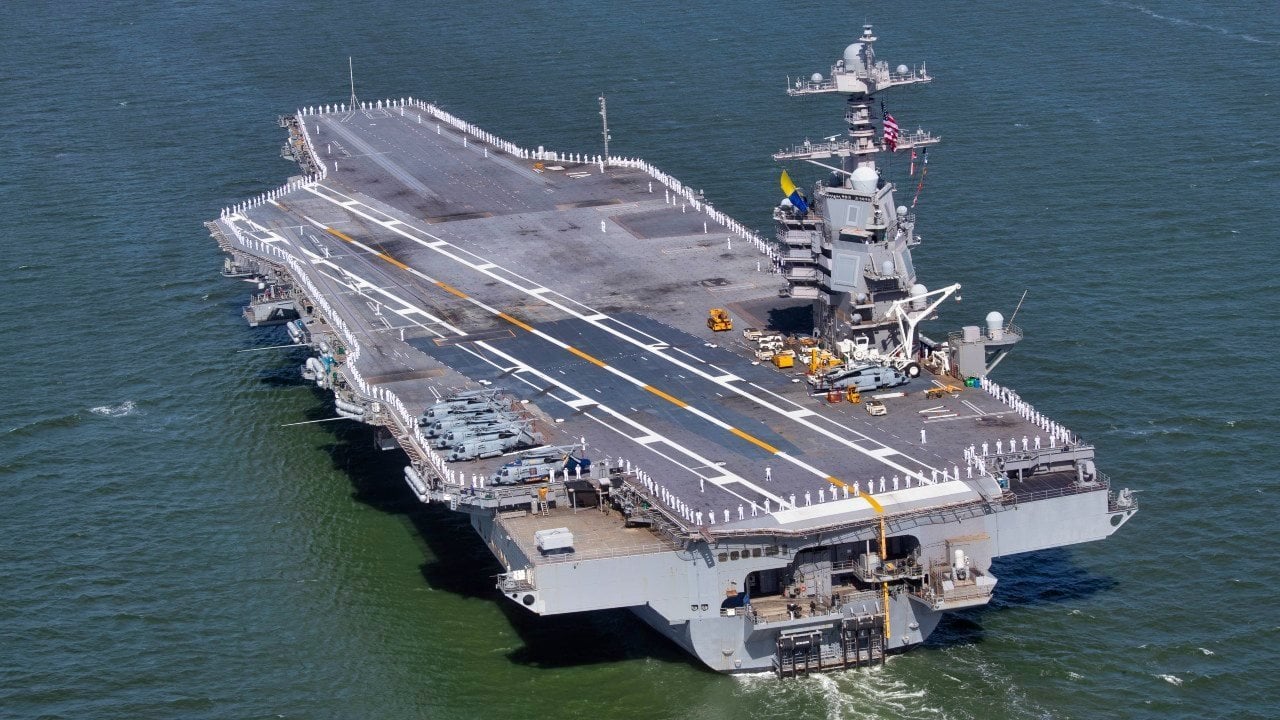
Stop building these things.
Even the corporate/access defense media is starting to sound the alarm bells on the multi-billion carrier fiasco that is the USS Ford which is probably causing plenty of public relations professionals in the Navy to go apoplectic.
As my readers know (Podcast Episode 034 and Dispatch # 006 on my Substack), I am a long-time critic of the carrier forces thinking that they are the chariot and crossbow of the 21st century in the Earthly realm of war craft.
It’s sad that the tens of billions the US Navy has utterly wasted on these homages to WWII naval combat continue to take center stage in the martial gaze of nostalgic navalists and the gullible public that bought into the charade.
The acquisition has been a constant shift to the right for delivery of the flawed and failed ship.
The first vessel was ordered by the government on Sept. 10, 2008. It was scheduled for delivery eight years later, but because of all the new technologies involved, it could not be deployed on time.
Aircraft carriers are simply the most expensive missile sponges in the modern age.
The Navy is stuck in a strategic rut. The maritime branch seems to think it is still 1996, and that U.S. carriers can travel unmolested and dominate any distant target the Navy desires.
That is not the case.
The advent of anti-access/area-denial (A2/AD) systems complicates the old American view of carriers as the ultimate – and easiest – form of power projection.
Even oversight entities are raising alarms bells, in this case the technical problems with launching and retrieving aircraft which seems to be a reasonable expectation for an aircraft carrier:
Tellingly, the Navy’s new reliability metric indicated “improvement in the reliability of the catapult and arresting gear systems” but it somehow lacked a direct tie to carrier performance.The Navy, when pressed for clarification, said, it “has addressed EMALS and AAG issues via a reliability growth plan that has resulted in an average Operational Availability of ~0.98 for the last 5,500 (~45%) launches and recoveries across both systems.” And yet, somehow, the carrier, despite great operational availability scores, struggled to qualify pilots. This gets at the root of the problem. Essentially, the Navy seems content to merely field something that looks and acts like a carrier. And by introducing another metric, the Service is refusing to even acknowledge the launch-and-recovery problems exist, effectively discrediting Pentagon weapons testers by muddying their very real concerns about the USS Ford’s ability to accomplish the platform’s central mission—generating more aircraft sorties faster than any previous U.S. aircraft carrier….
The Navy, in a statement that took nine days to generate, focused on the DOT&E’s primary measurement of EMALS and AAG reliability, or, in the technological lingo, “Mean cycles Between Operational Mission Failures”. The unsophisticated measure tallies the number of launches and recoveries that occur between system failures, and then averages them. As a mean, the Pentagon’s testing measure isn’t perfect, and can be overly influenced by
outliers.
There is some even more alarming details in the latest Congressional Research (2023) document here.
The USS Ford has a displacement of 100,000 tons.
Let me geek out on visualization for a moment.One billion dollar bills weighs one billion grams = 1 million kilograms = 2,204,622.62 lbs = 1102.31 us tons. One billion worth of 100 dollar bills = 22,046.22 lbs = 11.02 tons.
It would take over 14,000 tons of one dollar bills to pay for one carrier and the US Navy accepted a carrier that doesn’t reliably launch and retrieve aircraft (you had one job).
14,000 tons.
BTW, no urinals since the berthings are built gender-neutral. Only toilets for blue water cruising. Those of you who have been at sea know how problematic this is. Virtue signalling that every sailor on board will pay for when in any seas that aren’t smooth and glassy in aspect.
Stop building these things.
Email me at cgpodcast@pm.me.












